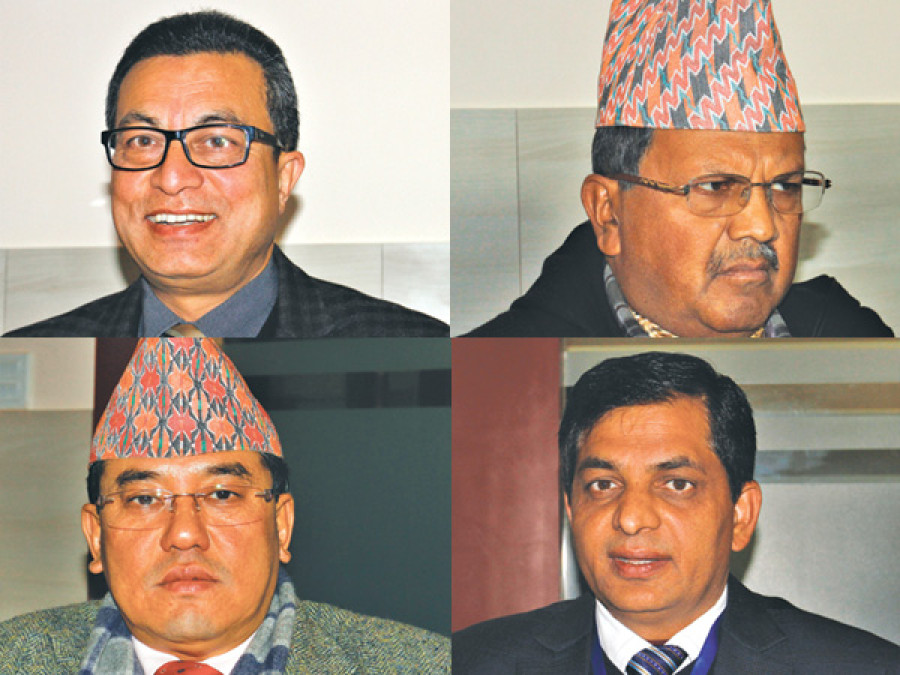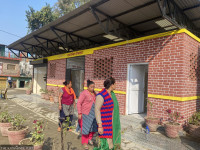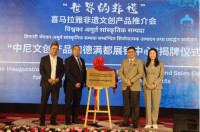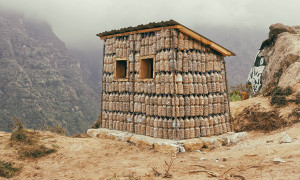Money
Lessons from the earthquake
The April 25 earthquake cannot be called a big one, but its destruction was massive nonetheless. This suggests our preparedness was lacking. If you take an example of the Kathmandu Valley, it was not that old houses collapsed, but it was dilapidated houses that collapsed.
Old building technology not bad
Padma Sundar Joshi
Programme Manager, UN Habitat
The April 25 earthquake cannot be called a big one, but its destruction was massive nonetheless. This suggests our preparedness was lacking. If you take an example of the Kathmandu Valley, it was not that old houses collapsed, but it was dilapidated houses that collapsed.
People think the houses built with old technology using brick and mud are unsound and concrete houses are strong. But there is nothing wrong with the houses built with old technology. If they are regularly renovated, they can withstand tremors. So the challenge in rebuilding is making our structures resilient to another possible shock. This work cannot be carried out by the government or a municipality alone, it has to be taken as a national campaign.
There is confusion among the public that high-rise buildings are the only solution to increasing population in the Valley. But considering our residence management capacity, we will not be able to arrange infrastructure facilities like roads and electricity for all of them in one place. More importantly, high-rise buildings cannot accommodate more people. As per the building construction laws, you have to leave as much open space as tall the buildings are. If you calculate this, low-rise high-density buildings accommodate more people than high-rise do. Our land plots and buildings are also very fragmented. We have to revise this system.
Third-party verification of building code compliance
Rudra Singh Tamang
Chief and Executive Officer, Kathmandu Metropolitan City
Nepal lacked preparedness for the earthquake; there is no doubt about this. In Kathmandu, because of limited land, we have to opt for high-rise buildings to ensure housing for everybody. We will implement third-party verification from this fiscal year to ensure building code compliance. Soil test, seismic test and load-bearing test have been made mandatory. We believe a civil code for citizens of the metropolis is required so that they are oriented towards constructing safer houses and neighbourhoods.
We are also in the process of hiring a consultant for drafting an infrastructure code specific for Kathmandu. KMC has partnered with National Society for Earthquake Technology-Nepal for conducting damage and vulnerability assessments. We can ensure resilient building construction by making engineers, who design buildings and supervise construction, responsible for safety.
Smart cities
Ichchha Raj Tamang
Chairman, Nepal Land and Housing Developers’ Association and Member of Parliament
Structures in seismic areas around the world are built using earthquake-resistant technologies. We, the housing developers in Nepal, have been implementing these technologies. None of our buildings have incurred massive structural damage. There are minor structural damages that are repairable through retrofitting. Some housing colonies have been damaged at the foundation-level because they were built without conducting soil test.
There is a lot of room for improvement in our building code to ensure complete safety. This applies not only to buildings, but also to electricity lines, water supply, roads, and open space, among other. Provision for adequate open space, enough road width and mandatory soil and load bearing capacity tests should be included in the building laws.
Construction quality is another major consideration. This includes materials as well as human resource. For Kathmandu, its existing infrastructure will not be able to sustain population surge due to accelerated rate of internal migration. We must go towards the concept of smart city. Seventeen percent of land in Nepal is owned by the public, rest is government-owned. We have to bring in a concept of leasehold property for private land for preventing land fragmentation.
Strong enforcement of laws required
Dhurba Raj Thapa
President, Nepal Engineers’ Association
After the earthquake, around 3,500 of our engineers inspected some 80,000 houses across the country. Buildings that have followed even minimal of engineering standards are safe. Most damage in urban areas is repairable. The people need to be made aware about how cost-cutting would compromise the safety of constructions. Existing laws are more than sufficient, but our enforcement is weak. In urban areas, building construction permit should only be granted under direct supervision of a licensed engineer. The engineer should be 100 percent liable for any design flaw. Engineers should be appointed in all VDCs.
Opt for quality materials
Sahil Agrawal
Joint Managing Director, Shanker Group
We are required by law to follow a minimum basic standard while producing construction materials like cement and steel and we have always complied with the law. But the minimum standard needs to be constantly revised to bring about quality production. The problem I see is new homeowners opt for cheaper materials over quality products. This needs to change.
Planned settlements
Madhusudan Adhikari
Acting Secretary, National Reconstruction Authority
Our first priority is to rebuild damaged neighbourhoods into sustainable, strong and planned settlements. Although NRA is not an implementing agency, we will use district-level organs of line ministries to launch our projects and programmes. We will begin reconstruction from January 16, the day that marks the National Earthquake Safety Day.
(Text by Gaurav Thapa)




 12.12°C Kathmandu
12.12°C Kathmandu













